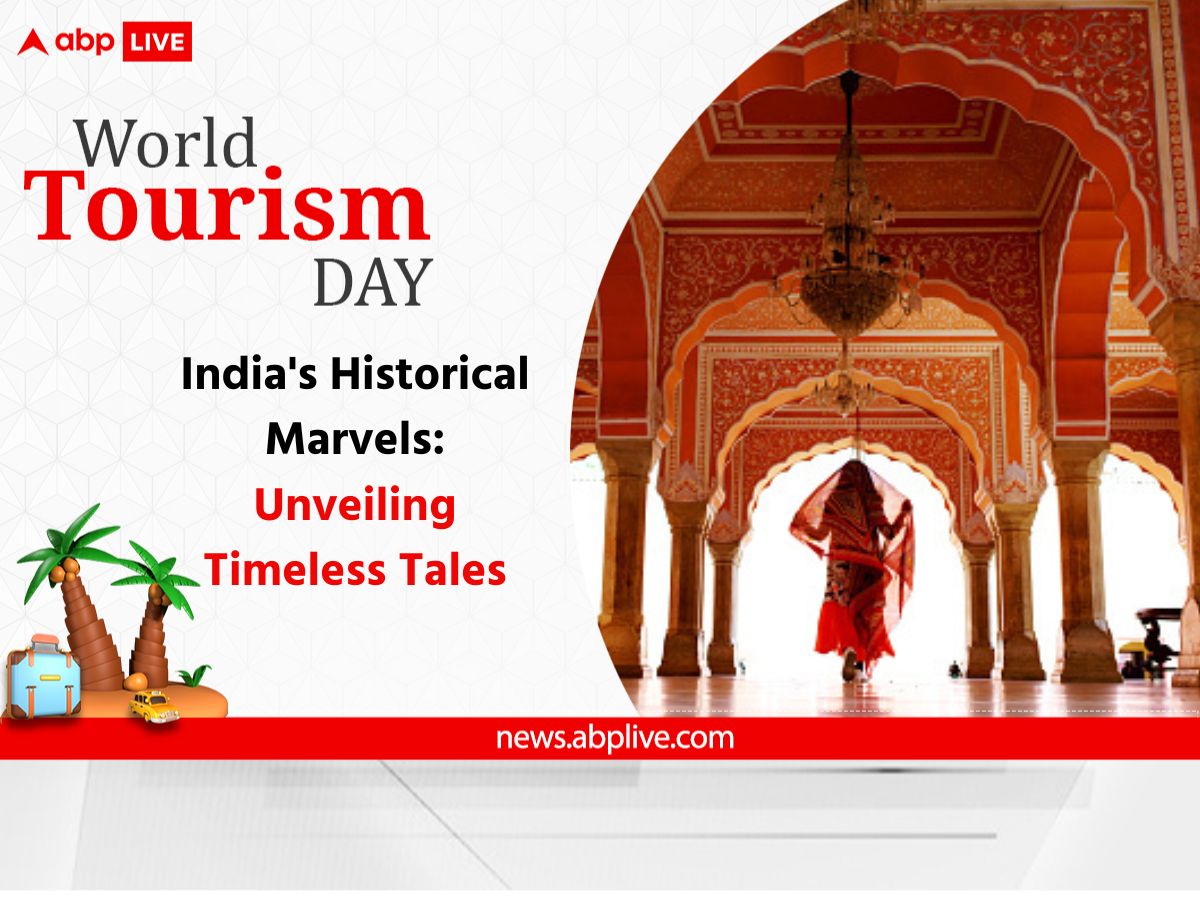India, a land of opulent palaces, ancient forts, and majestic structures, beckons history enthusiasts and adventure seekers alike. With its storied past oozing from every crevice, this diverse nation is home to countless historical monuments that narrate captivating tales of romance, bravery, strength, and epic battles. If you're eager to embark on a historical journey through this magnificent land, look no further. We've curated a list of iconic historical places in India that will transport you through time.
Taj Mahal, Agra: The Epitome of Love
When it comes to historical wonders, the Taj Mahal reigns supreme. Commissioned in 1632 by Shah Jahan in memory of his beloved wife Mumtaz Mahal, this opulent white marble structure stands as an enduring symbol of love. After 22 years of meticulous craftsmanship, the Taj Mahal emerged as one of the most iconic historical places in India.
Legend has it that Shah Jahan ordered the hands of the workers to be cut off to prevent the replication of this architectural masterpiece. Today, a shopping complex and hotel in Dubai draw inspiration from the Taj Mahal, aiming to be four times larger in size.
Agra Fort, Uttar Pradesh: A Glimpse into Mughal Grandeur
To delve into the rich Mughal era, visit the Agra Fort, a walled palatial marvel constructed entirely from red sandstone in 1565 by Akbar. Adorned with ornate gates like the Amar Singh Gate and the Delhi Gate, the fort presents an ancient city replete with gateways, courts, passages, palaces, and mosques. Agra Fort stands as one of the most beautiful places to visit in Agra.
Red Fort, Delhi: A Testament to Power
Another historical gem, the Red Fort in Delhi, was built from 1638 to 1648 during Shah Jahan's reign when the capital shifted from Agra to Delhi. Originally known as Qila-e-Mubarak, this octagonal fort is now one of the most famous historical places in North India. It also serves as the backdrop for the President's Independence Day speech.
Qutub Minar, Delhi: The First Muslim Kingdom
The Qutub Minar, a UNESCO World Heritage site, marks the site of northern India's first Muslim kingdom. This intricate red sandstone structure showcases Indo-Muslim architecture and is adorned with verses from the Quran. Standing tall, it pays homage to Qutb-ud-din Aibak, North India's first Muslim ruler.
Khajuraho Temples, Madhya Pradesh: Beyond Eroticism
Khajuraho, often misunderstood for its sensuality, is a historical treasure trove showcasing countless sculptures that depict not just sensuality but also love, grace, beauty, delicacy, and creative arts. A blend of Hinduism and Jainism, these temples feature carvings of cult icons, demi-gods, and Apsaras.
Sanchi Stupa, Madhya Pradesh: A Buddhist Haven
Discover the religious heart of Buddhism at the Sanchi Stupa, home to relics of the Buddha. Built by Emperor Ashoka in the 3rd century BC, this stupa signifies the wheel of law and represents Buddha's freedom from the cycle of life and death (Moksha).
Konark Temple, Odisha: A Stone Enigma
Crafted by King Narasimhadeva I and 1,200 artisans, the Konark Temple is a masterpiece set in stone. Nestled on the Bay of Bengal's coast, it showcases exquisite ancient architecture and intriguing sculptures, including the enigmatic depiction of two lions crushing elephants.
Mahabodhi Temple, Bodh Gaya: Where Enlightenment Beckoned
The Mahabodhi Temple stands as one of the four holy grounds of Buddhism, where Buddha is said to have attained enlightenment under a fig tree. The temple houses relics of Buddha and features a massive statue of Buddha touching the earth with his right hand.
Rani ki Vav, Gujarat: A Subterranean Marvel
The Rani ki Vav stepwell, a colossal structure descending over 24 meters into the earth, is an architectural wonder. Built in the 11th century by Queen Udayamati in memory of King Bhimdev, it's an exceptional but lesser-known historical place in India.
Victoria Memorial, Kolkata: The British Legacy
A testament to the British era in India, the Victoria Memorial in Kolkata stands as an elegant reminder of that period. Set amidst lush gardens, it houses a museum filled with British memorabilia, paintings, sculptures, and royal portraits.
Jallianwala Bagh, Punjab: A Martyr's Memorial
Jallianwala Bagh, near the Golden Temple in Amritsar, witnessed the infamous Jallianwala Bagh massacre. This solemn monument covers around 6.5 acres and serves as a tribute to the innocents who lost their lives during this tragic incident, which played a pivotal role in the Indian independence movement.
Golden Temple, Punjab: A Spiritual Haven
The Golden Temple, or Sri Harmandir Sahib, is among the most revered Gurudwaras globally. Located in the heart of Amritsar, this gilded marvel is visited by scores of pilgrims daily, offering a glimpse into the spiritual soul of India.
Mehrangarh Fort, Jodhpur: Majestic Hilltop Fortress
Constructed in 1459 by Rao Jodha, Mehrangarh Fort stands as one of India's largest forts. Perched atop a hill, it boasts seven entrances and stunning palaces like the Rose Palace and the Glass Palace.
Amer Fort, Jaipur: The Pink City's Crown Jewel
Amer Fort, a magnificent 16th-century fort in Jaipur, dazzles with its yellow and pink sandstone facades. Commissioned by Maharaja Man Singh, it features stunning interiors and remains a UNESCO World Heritage site.
Lakshmi Vilas Palace, Vadodara: Royal Opulence
The Lakshmi Vilas Palace, commissioned by the Gaekwad family, offers a glimpse into royal opulence. This Indo-Saracenic architectural marvel showcases European-inspired interiors and vast gardens with a golf course.
Each of these historical wonders tells a unique story, weaving together the rich tapestry of India's past. So, pack your bags and embark on a captivating journey through time, discovering the grandeur and legacy of these remarkable historical places in India.


